At a Glance
Because of the size of the dairy and beef cattle sectors, Québec can count on a considerable number of cattle which, upon “retirement”, are sold to the slaughter plant for meat. These cattle, known as cull cattle, produce quality meat, mainly ground beef, which is destined for fast food restaurant chains, among others.
Over the years, meat from cull cattle has earned an enviable place on national and export markets. The quality of the livestock, the traceability and slaughter plant inspection systems are all advantages that have allowed Quebec producers to increase their animals’ market value.
According to Statistics Canada, on January 1st, 2019, Quebec had a herd of 508,300 cows in production, 9,100 bulls and 159,100 replacement heifers.
Cull cattle
When these cattle are culled, they are marketed for meat. Known as cull cattle, they produce meat intended for processing into ground beef for the retail market and as value-added products for the restaurant sector and prepared foods.
Cull cattle are marketed at livestock auctions to supply Quebec slaughter plants and butchers, in the Ontario market and for export to the United States.
The lean meat from cull cows is in demand by buyers and the traceability of Quebec cattle is advantageous for the development of new markets.
Dairy calves
Marketed dairy calves are purchased by milk-fed veal or grain-fed veal producers for fattening. Some calves not meeting feedlot requirements may also be slaughtered for meat.
Why are cattle culled?
Cattle are culled mostly at the end of their active milk production lives or as veal calves (productive period ended). The animals may also be culled as a result of a breeding problem (difficulty reproducing). Milk producers and veal producers must therefore replace their animals with new ones allowing them to achieve the production targets of their farm. This is when the cattle are culled, thus being removed from the herd and the farm. The cattle then have a second use allowing value to be extracted on the meat market.
Why sell dairy calves?
Dairy cows must calve so they can lactate and produce milk for consumption. Dairy farmers decide on the use of the resulting calves:
- Keep them in the farm’s herd to become dairy cows when they are females considered fit for milk production;
- Market them to feedlots for fattening as veal calves for most of the males and for females unfit for milk production.
Did you know?
- In Québec, 105,000 cull cattle (dairy and beef cattle) produce more than 73 million pounds of beef. Annual sales are about $85 million.
- Quebecers consume an average of 35 lb (16 kg) of ground beef per year.
- The hamburgers at your favourite fast food restaurant chain, the filet mignon at the corner brasserie or the shepherd’s pie at your child’s school cafeteria have one thing in common: they are probably made with meat from Québec cull cattle.
 Youtube
Youtube Facebook
Facebook
